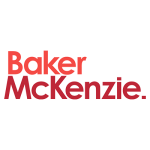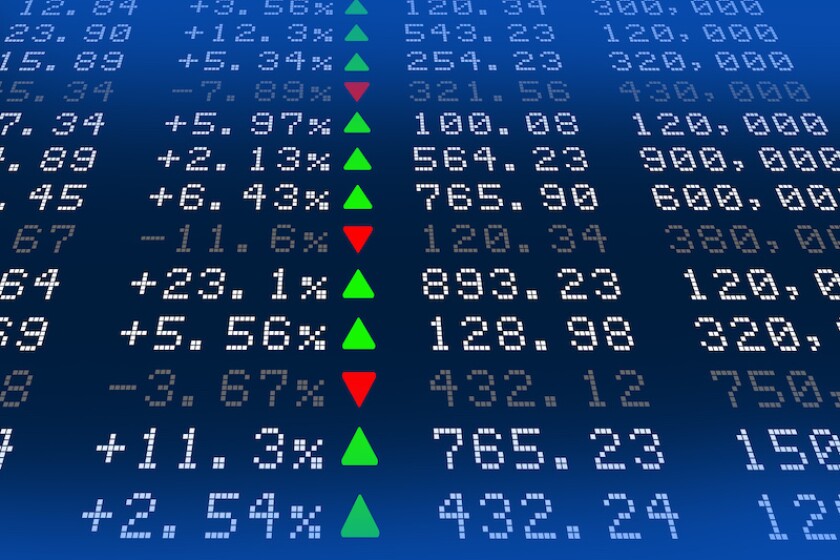Baker McKenzie partners consider the role of geopolitical tensions in growing competition between stock exchanges around the world
1 Minute read |
At a time of heightened geopolitical tension, stock exchanges around the world are considering how to increase their share of the IPO market and, in particular, how to attract the new wave of new economy companies to list. As the pace of listing reforms accelerates, this article considers the various strategies and initiatives that key global stock exchanges have either introduced or are pursuing as the battle for listings intensifies |
At a time of heightened geopolitical tension and the return of volatile markets, with Brexit and a US-China trade war never far from the headlines, stock exchanges around the world are looking at ways to increase their share of initial public offerings (IPO) and, in particular, how to attract the next wave of new economy companies to list.
Coming off the back of a sterling performance in 2018 when over $60 billion was raised by companies through cross-border IPOs, global cross-border IPO activity faltered in the first half of 2019, with total value down 55% to $11.3 billion and volume down 16%, with 85 listings recorded. Despite the decline in listings, this was still the second-highest level seen since 2014.
While cross-border activity was down overall, it was the dip in capital raised by Chinese issuers – down from $15.3 billion in H1 2018, to $8.8 billion in H1 2019, a decline of 42% – that accounted for such a significant drop in value.
Factors affecting listing venue
Where companies choose to list is ultimately based on a number of different factors, but top considerations are likely to be valuation and liquidity, together with the strength of the regulatory regime, extent of analyst coverage, and the size of the investor base. The costs of listing, the sector focus of the exchange and the efficiency or speed of the process are all important, as is listing in a country that is in or close to a company's biggest current or growth markets.
Companies think about what exchange will get them the best valuation on day one, but also which will give them investor interest from day two and beyond – so for many companies that will mean their local market or a market aligned with their business strategy. For example, if a company's growth story is around China, listing in Hong Kong makes sense. Or, for instance, there will be a specialisation of exchanges – Australia, London and Toronto for mining, Hong Kong for branded consumer goods and those focusing on China or Asia Pacific.
It is partly for these reasons – companies seeking a listing in a foreign country that represents a core growth market for their business, or an exchange in a foreign country that specialises in listings from their industry – that cross-border IPOs are flourishing. Also important for companies is being able to access deeper pools of international capital, and listing in a country where there may be fewer regulatory restrictions than in their domestic market or, conversely, higher regulatory requirements that may enhance the company's reputation.
Despite some eye-catching regulatory and listing rule changes introduced in the last couple of years, competition between stock exchanges in key global money centres is nothing new. While the majority of companies will still find good reasons to list on their domestic exchange, the impact of globalisation and the free movement of capital has broadened the conversation and provided new opportunities for companies to tap overseas capital and enhance their visibility and profile in critical markets.
Tech sector leads the way
With stock exchanges, particularly in Asia, modernising their regulations and looking to position themselves as credible alternative exchanges, we are now seeing the development of rivals to the traditional players in the west. A new battleground is emerging among exchanges as they make issuer-friendly changes to their rules and requirements in a bid to attract future unicorns and the myriad of companies developing next-generation technologies.
Last year the technology sector was not only one of the most prolific by number of IPOs, but also a leader by total value of capital raised. Some of the largest listings last year came from Chinese technology companies, including the IPOs of smartphone maker Xiaomi, Foxconn Industrial Internet, and video and music streaming companies iQIYI Inc. and Tencent. Such high levels of activity are expected to continue, not least because of the bulging pipeline of technology unicorn IPOs to come.
The ability to attract the kind of high-growth technology companies that are reshaping business models and weaving their way into our everyday lives is a key consideration driving many of the changes we are now seeing across exchanges as they compete for listings. In 2014, Chinese issuer Alibaba raised $25 billion through its listing on the New York Stock Exchange (NYSE) in what remains the largest IPO in history.
Hong Kong had traditionally been seen as the venue of choice for Chinese-based companies, so why did Alibaba choose the US? A key differentiating factor at the time between Hong Kong and the US was that while the US exchanges permitted dual class shares, or weighted voting rights (WVR) as they are known in Hong Kong, the Hong Kong Stock Exchange (HKEx) did not. While dual class shares remain controversial among investors, they are particularly popular with founder-led companies that want to retain voting control. They argue that this allows them to focus on growing the business without the distraction of short-term investor demands for share price increases.
Hong Kong steps up the competition
Traditionally, one-share, one-vote was the principal shareholding structure of companies listed in Hong Kong, but the loss of such a marquee listing from its closest neighbour to its international rival appeared to trigger an urgent strategy rethink by the HKEx.
Following a public consultation, on April 24 2018, it published its conclusions and decision to amend the listing regime to facilitate the listing of emerging and innovative companies by permitting the use of WVR structures. Under the new listing rules, WVR with a greater voting power (maximum of ten times) could attach to a particular class of share, although certain fundamental matters remain subject to voting on a one-share, one-vote basis. The changes brought immediate dividends as first Xiaomi and then online services provider Meituan Dianping, two high profile Chinese technology firms employing WVR, chose to list in Hong Kong.
In addition to allowing dual class shares, the HKEx also introduced changes to permit the listings of pre-revenue biotech companies that do not satisfy any of the financial eligibility tests. Ascletis Pharma, a Hangzhou-based biotech company with a new drug to treat hepatitis C, became the first pre-revenue biotech company to list on the exchange, and several more have since followed.
Although the share prices of both Xiaomi and Meituan Dianping delivered underwhelming performances following their listing debut, which somewhat dampened the excitement around the new listing regime, the HKEx continues to retain its appeal as a result of its decision to permit the listing of both dual class shares and pre-revenue biotech companies. In fact, the new issue activity on the HKEx last year was stellar, enabling it to regain the top position globally from the NYSE as the number one exchange by number and value of IPOs.
The revised listing rules also established a new concessionary secondary listing route for innovative companies that have their primary listing on the NYSE, Nasdaq or a premium listing on the London Stock Exchange (LSE), and it hopes this will positively impact the HKEx's ability to attract companies with overseas listings to conduct a secondary listing in Hong Kong. Alibaba, China's e-commerce giant, is, according to reports, planning to commence a secondary listing there before the end of the year.
Cross-border collaboration
Some bourses are also realising that there may be benefits to collaborating with the competition. Over the past few years, Hong Kong, Shenzen and Shanghai have operated a Stock Connect system. This has allowed both international and mainland Chinese investors to trade securities in each other's markets via their home exchange. With this blueprint in mind, on June 17 2019, the LSE and the Shanghai Stock Exchange (SSE) announced the first day of trading for their London-Shanghai Stock Connect project, which allows companies listed on the two exchanges to issue, list and trade depositary receipts on the counterpart's stock exchange. The first company to take advantage of this was the Chinese brokerage Huatai, which listed global depositary receipts on the LSE's main market.
Regulatory changes in the UK
There have been concerns that two well-meaning regulatory changes would have the unintended consequence of negatively impacting the London market. One area of concern has been that the Markets in Financial Instruments Directive (Mifid) II would negatively impact the visibility of and market liquidity of small-cap companies, potentially making it less attractive for small companies to go public in the first place. The other area of focus has been the introduction last year by the UK Financial Conduct Authority of new provisions on the availability of information in the UK equity main market IPO process. Those changes were intended to improve the range, quality and timeliness of information made available to the market and, in particular, to restore the centrality of the registration document or prospectus in the overall process in order to boost investor confidence. At the same time, there were concerns that the changes could add to costs or timetables. In practice, the evidence so far has been that while the changes have done little to achieve their stated intentions, equally they have not proved a concern for new issuers.
In contrast, the recently refreshed UK Corporate Governance Code – which has crucially retained the flexible 'comply or explain' regime – continues to appeal to issuers from across the EMEA regime attracted by the high, but not rigid, standards. While London has sought to innovate in IPO regulation, experience has shown that the real benefits have come when the focus has been on enhancing its existing strengths. Nevertheless, while its corporate governance environment is admired and the cultural openness of the UK makes it a natural home for many EMEA issuers, the smaller pool of capital, as compared to the US and China, is likely to continue to leave it behind in the contest for the largest and most mobile mega-IPOs.
Chinese game changer?
In November 2018, President Xi Jinping of China announced plans for a Nasdaq-style technology board on the Shanghai Stock Exchange, intended to foster the growth of mainland Chinese technology companies. The new science and technology innovation board – the STAR Market – focuses on new high-tech and strategic emerging industries that are aligned with national strategies, and is intended to provide an attractive listing alternative to overseas bourses.
The STAR Market has boosted its competitive credentials by allowing companies with WVR structures to list, in addition to certain pre-revenue companies. It is likely that this move is designed to stem the flow of Chinese companies choosing to list in the US due to their more flexible approach to corporate structures. This also puts it in direct competition with Hong Kong, which only recently changed its listing rules to accommodate demands for a more liberal regime to attract new technology companies. Countering concerns that the new board could remain subject to the same issues as its domestic predecessors, namely an opaque approvals process and uncertain timing, the board is, for the first time, operating a registration-based system that replaces the requirement for companies to go through an approval process with the regulator.
While there will always be an appetite to tap foreign investor pools, China's new board is set to encourage more companies to list domestically, and we could begin to see a real shake-up in the market when it comes to Chinese IPOs – particularly given the positive sentiment towards Hong Kong's regulatory changes last year. In just a few months since the board began accepting applications, it has attracted over 140. The board went live on July 22 2019, with an initial 25 listed companies, all of which experienced a significant surge in their share price on day one.
China currently dominates cross-border technology IPOs, with eight of the 12 recorded in the first half of 2019 domiciled there – four of which were listed on the HKEx, three on Nasdaq, and one on the NYSE. This trend is set to continue and the STAR Market is gearing up to directly challenge the HKEx, NYSE and Nasdaq as the listing venue of choice for new technology companies, particularly those emerging out of China. However so far, HKEx, NYSE and Nasdaq have remained attractive to many issuers for their regulatory regimes that are considered more market-driven and free from direct government intervention.
Mega IPOs moving east?
It is unlikely that the relative listing merits of the US bourses and those in China and its territories can be viewed in isolation from the ongoing trade dispute and China's ambitions on the global stage, highlighted most overtly by the championing of its Belt and Road Initiative. This mammoth project, involving the development of physical infrastructure across continents, complements its moves in the capital markets space to capture a greater share of the global flow of capital.
While we can't yet say what a secondary listing by Alibaba in Hong Kong might ultimately mean for the company's commitment to its NYSE listing, the Chinese chipmaker Semiconductor Manufacturing International Corp. has already delisted its American depositary receipts from the NYSE. Citing the cost and low trading volumes for the move, this comes at a time of heightened tension as the US focuses on protecting its technology sector from what it labels Chinese misappropriation.
One potential IPO that has been talked about for a while is that of the Chinese electronic payment provider Ant Financial, an affiliate of Alibaba. This blockbuster IPO will be a notable coup for whichever bourse is able to attract the listing. Despite its parent listing in New York, since the HKEx changed its rules to allow dual class shares, there have been suggestions that it could be the preferred destination for the company. But with Shanghai's new STAR Market seemingly tailor-made for it, the final destination for any IPO remains very much a guessing game.
Perhaps giving Shanghai an extra boost is the fact that China's A-shares (the name given to Chinese company shares trading on domestic exchanges) generally trade at a premium to so-called H-shares (the shares of mainland Chinese companies that trade on the HKEx) due to increased demand for domestically-listed stocks. As a result, a company choosing to list on an exchange in mainland China is likely to receive a better valuation that on the HKEx, which may be another factor that weighs on the final decision.
Regional competition in Asia Pacific
In addition to the challenges provided by mainland Chinese exchanges, the Singapore Stock Exchange (SGX), another of Hong Kong's regional rivals, has also taken steps to become more competitive. In 2012 the SGX was unsuccessful in attracting Manchester United to list on the exchange. At the time, the SGX prioritised investor protection, maintaining the corporate governance principle of 'one share, one vote', which contributed to the exchange losing the listing. The US-owned club listed on the NYSE with a dual class share structure.
After two rounds of public consultations, the SGX revised its listing rules to permit dual class shares in June 2018, although it is yet to see its first listing under the new regime. Given the continuing concerns of the investor community around such structures and their impact on voting power and control, the SGX's decision, coming just two months after the HKEx implemented its listing regime changes, appears to implicitly acknowledge that it was falling behind its international competitors and needed to evolve, even at the expense of governance standards.
However, in a rather downbeat assessment of the changes, the Asian Corporate Governance Association said the move "damages regulatory credibility and contradicts emphasis on investor stewardship". While investors and governance bodies may continue to pressure legislators, regulators and exchanges to address such disparate voting structures, without a coordinated global approach it is unclear whether it will be possible to reconcile the goal of one share, one vote with the competitive challenges faced by the top global exchanges in securing the listings of the most attractive issuers.
The number of SGX-listed companies is, in fact, shrinking, with some choosing to delist and go private. The Singapore-based company Osim delisted from the Singapore exchange in 2016 citing rising compliance costs and the belief that it was undervalued due to low liquidity on the exchange. It then applied to re-list in Hong Kong, although its application subsequently lapsed.
Another Singaporean success story was the gaming company Razer. Despite backing from the Singapore sovereign wealth fund GIC, in 2017 it decided to list in Hong Kong due to its close connection to the Chinese market and the depth of liquidity. More recently, PropertyGuru announced plans to list on the ASX rather than in its home market, although it subsequently pulled its listing. The gravitation towards alternative exchanges starkly illustrates the challenge the SGX faces to remain competitive and attract homegrown businesses to list domestically, and the struggle to remain relevant in the market for listings.
Tough to topple the US
Although the first quarter of 2019 saw North America bear the brunt of the US federal government shutdown and the Securities and Exchange Commission's subsequent backlog and delay in activity on the IPO market, Nasdaq was still the second leading cross-border IPO destination, having raised $2.2 billion from 24 public debuts during the first half of the year by companies based in China, Israel, Singapore, France, Hong Kong, Cyprus and Colombia. On the domestic front US exchanges were dominant, with the NYSE raising $18.9 billion, up 16%, and Nasdaq $13.1 billion, up 12% compared to the same period last year. Despite the continued trade war between the US and China, there has still been considerable demand from Chinese companies to list on US exchanges, with 16 listings raising over $2 billion across Nasdaq and the NYSE.
Listing venue arbitrage
When it comes to enhancing the IPO process, exchanges are, however, somewhat restricted in their reforms by regulation, so there is only so much the exchanges can do. In Australia and the US, the Securities Acts drive the requirements so exchanges can't change the process too much. And when everyone can remember the global financial crisis, regulators won't win fans by relaxing regulation. Public equity markets are still one of the most efficient ways of allocating capital in modern society, but they need to be optimised without losing investor protections.
Companies have been playing a game of listing venue arbitrage by seeking out bourses to list on that are willing to accommodate their specific needs and corporate governance requirements. As Asian exchanges play catch-up and with US-China trade tensions added to the mix, there could be more developments to come as companies navigate the fine line between economic rationale and political expediency.
We don't know yet what the full repercussions of the strained US-China relationship will be, but we have certainly seen signs that the debate is playing out on the world's major stock exchanges. For all their efforts to remain competitive, in the final analysis, there may be other extraneous factors at play that will determine where certain companies ultimately choose to list.
It is undeniable that the US exchanges will remain an attractive proposition for technology companies given the depth of the US capital markets and sector expertise in the investment banks and among investors. With the listing rule changes that have taken place in Hong Kong and the development of Shanghai's new STAR Market, the arguments for listing overseas in the US or elsewhere may become much weaker. As these Asian bourses grow and develop, they could well become the more natural fit for homegrown new technology companies in China and provide the next generation of unicorns with a strong incentive to list much closer to home.
With stock exchanges proactively looking to attract lucrative listings, there will be pressure for each exchange to adopt (or maintain) flexible listing standards with respect to voting structures. While typically the reasons for a cross-border listing are driven by liquidity or other market conditions, governance considerations can also be an important factor that the exchanges must balance when contemplating changes to their listing requirements.
While commentators may view modifications of voting restrictions by the Hong Kong and Singapore exchanges as a race to the bottom, there is increasing competition among exchanges for key listings of large internationally-oriented companies that originate from jurisdictions which permit disproportionate voting structures and, absent regulatory changes or strong pushback from the investment community, those forces will likely continue to have implications for the evolution of listing standards.
As listing rules and bourses evolve we are seeing the beginning of a revolution in the options available to companies and where they choose to list. The signs are that the phenomenal growth of the IPO market in Asia Pacific will likely continue, and the Hong Kong, Singapore, Shanghai and Shenzen exchanges will together develop to become key competitors to London and New York over the coming years.

|
Chris Bartoli Partner Baker McKenzie Chicago |
|

|
Ivy Wong Partner Baker McKenzie Hong Kong |
|

|
Nick O'Donnell Partner Baker McKenzie London |



